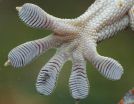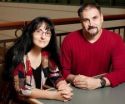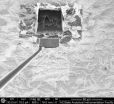(Press-News.org) URBANA, Ill. For the past 20 years, researchers have published soil organic carbon sequestration rates. Many of the research findings have suggested that soil organic carbon can be sequestered by simply switching from moldboard or conventional tillage systems to no-till systems. However, there is a growing body of research with evidence that no-till systems in corn and soybean rotations without cover crops, small grains, and forages may not be increasing soil organic carbon stocks at the published rates.
"Some studies have shown that both moldboard and no-till systems are actually losing soil organic carbon stocks over time," said University of Illinois soil scientist Ken Olson who led the review.
The review was conducted by a team of senior researchers from universities in Illinois, Wisconsin, Iowa, and Ohio who studied the published soil science and tillage literature related to soil organic carbon sequestration, storage, retention, and loss.
After examining hundreds of original research and summary papers, 120 papers on all sides of the soil organic carbon sequestration, storage, retention, and loss issue were selected for review and analysis.
Olson explained that the difference between the no-till and moldboard plots at the end of a long-term study is only a measure of net soil organic carbon storage difference between treatments and does not support soil organic carbon sequestration claims.
No-till systems on sloping and eroding sites retain more soil organic carbon in the surface from 0 to 15 centimeters when compared to moldboard as a result of less disturbance and less soil erosion and transport of soil organic carbon-rich sediment off the plots.
"The subsurface layers also need to be sampled and tested to the depth of rooting or 1 or 2 meters," Olson said. "That no-till subsurface layer is often losing more soil organic carbon stock over time than is gained in the surface layer."
During the analysis of the work, Olson said that it became apparent that there were a number of reasons for the conflicting findings, including the definition of soil organic carbon sequestration used by different researchers.
The team proposed the definition of soil sequestration be: the process of transferring CO2 from the atmosphere into the soil of a land unit through unit plants, plant residues, and other organic solids, which are stored or retained in the unit as part of the soil organic matter (humus). To claim soil organic carbon sequestration, management practices must lead to an increase in the net soil organic carbon from a previous pre-treatment baseline measurement and result in a net reduction in the CO2 levels in the atmosphere. Carbon not directly originated from the atmosphere (from outside the land unit) cannot be counted as sequestered soil organic carbon. These external inputs may include organic fertilizers, manure, plant residues, topsoil, or natural input processes such as erosion of a sloping soil and sediment-rich carbon deposition on a soil located on a lower landscape position or in a waterway. The land unit could be a plot, plot area, parcel, tract, field, farm, landscape position, landscape, wetland, forest, or prairie with defined and identified boundaries.
The team identified a number of other methodological factors that could lead to errors in reported soil organic carbon sequestration rates, including: using inappropriate experimental methods; not collecting and testing the deeper surface layers; lack of soil bulk density measurements; not accounting for carbon in amendments being loaded on the plots from external sources; use of different soil organic carbon laboratory methods over the long-term study; effects of soil erosion; transport and deposition on the experimental tillage plots; lack of sloping and eroding sites included in summary studies; natural variability that was not captured by the sampling scheme; only sampling the plot areas once when trying to determine rate of change; insufficient frequency of sampling; and relying on an assumption that after 100 years of cultivation and before the tillage treatment was applied that the soil organic carbon had dropped 20 to 50 percent but was now at a steady state.
Olson said that aeration, drainage, tillage, disturbance, more intensive crop rotations, use of synthetic fertilizers, erosion and lack of cover crops can all result in reduced soil organic carbon stocks.
Because it would take 20 to 50 more years to design and run such a study, the team found a long-term study that had all the required soil property data collected for the root zone or to a depth of 1 or 2 meters from before the tillage treatments were applied and sampled frequently during and at the end of the study. This study is located at U of I's Dixon Springs Agricultural Center with tillage plots that are part of a North Central Region Soil Erosion and Productivity Committee study and located on a Grantsburg soil with a fragipan at 75 centimeters, moderately eroded, on 6 percent slopes and with six replications.
Olson said that the accuracy of determining soil organic carbon sequestration depends on the method used. "In this review, both the paired comparison method and the pre-treatment soil organic carbon method were tested using the same plots and experiment," he said.
The results of this comparison showed that the paired-method (no-till compared to moldboard) overestimated soil organic carbon sequestration as compared to pre-treatment method, where both no-till and moldboard compared to the same pre-treatment baseline. "Another flaw in the paired comparison method is that the results could not be validated where no pre-treatment baseline is available," Olson said.
The team of researchers recommend: (1) that researchers trying to determine and measure soil organic carbon sequestration rates no longer use the comparison method and adopt the pre-treatment soil organic carbon method, and (2) that existing long-term studies that researchers want to use to determine soil organic carbon sequestration rates be stopped temporarily and sampled following the soil organic carbon sequestration protocol outlined in their article.
"Because these long-term studies are used for crop-yield determinations they need to be re-started without interruption, and soil sampling can be done during the non-growing season," Olson said. "Then the long-term experiments can be used to measure soil organic carbon sequestration rates."
INFORMATION:
"Experimental Consideration, Treatments, and Methods in Determining Soil Organic Carbon Sequestration Rates," authored by Kenneth R. Olson, Mahdi M. Al-Kaisi, Rattan Lal, and Birl Lowery, was published in Soil Science Society of America Journal and is available free at https://www.soils.org/publications/sssaj/pdfs/78/2/348.
"Soil organic carbon sequestration, storage, retention and loss in U.S. croplands: Issues paper for protocol development," authored by Kenneth R. Olson, was published in Geoderma is available free at http://www.sciencedirect.com/science/article/pii/S0016706112004211.
Researchers question published no-till soil organic carbon sequestration rates
2014-04-18
ELSE PRESS RELEASES FROM THIS DATE:
Sun emits a mid-level solar flare
2014-04-18
The sun emitted a mid-level solar flare, peaking at 9:03 a.m. EDT on April 18, 2014, and NASA's Solar Dynamics Observatory captured images of the event. Solar flares are powerful bursts of radiation. Harmful radiation from a flare cannot pass through Earth's atmosphere to physically affect humans on the ground, however -- when intense enough -- they can disturb the atmosphere in the layer where GPS and communications signals travel.
To see how this event may impact Earth, please visit NOAA's Space Weather Prediction Center at http://spaceweather.gov, the U.S. government's ...
Researchers find 3-million-year-old landscape beneath Greenland ice sheet
2014-04-18
Glaciers and ice sheets are commonly thought to work like a belt sander. As they move over the land they scrape off everything — vegetation, soil and even the top layer of bedrock. So a team of university scientists and a NASA colleague were greatly surprised to discover an ancient tundra landscape preserved under the Greenland Ice Sheet, below two miles of ice.
"We found organic soil that has been frozen to the bottom of the ice sheet for 2.7 million years," said University of Vermont geologist and lead author Paul Bierman. The finding provides strong evidence that the ...
Religious music brings benefit to seniors' mental health
2014-04-18
A new article published online in The Gerontologist reports that among older Christians, listening to religious music is associated with a decrease in anxiety about death and increases in life satisfaction, self-esteem, and sense of control over their lives. In particular, listening to gospel music is associated with a decrease in anxiety about death and an increase in sense of control.
These associations are similar for blacks and whites, women and men, and individuals of both low- and high-socioeconomic status.
The article, titled "Listening to Religious Music and ...
Ancient DNA offers clues to how barnyard chickens came to be
2014-04-18
Durham, NC — Ancient DNA adds a twist to the story of how barnyard chickens came to be, finds a study to be published April 21 in the journal Proceedings of the National Academy of Sciences.
Analyzing DNA from the bones of chickens that lived 200-2300 years ago in Europe, researchers report that just a few hundred years ago domestic chickens may have looked far different from the chickens we know today.
The results suggest that some of the traits we associate with modern domestic chickens -- such as their yellowish skin -- only became widespread in the last 500 years, ...
Plants with dormant seeds give rise to more species
2014-04-18
Durham, NC — Seeds that sprout as soon as they're planted may be good news for a garden. But wild plants need to be more careful. In the wild, a plant whose seeds sprouted at the first
warm spell or rainy day would risk disaster. More than just an insurance policy against late frosts or unexpected dry spells, it turns out that seed dormancy has long-term advantages too: Plants whose seeds put off sprouting until conditions are more certain give rise to more species, finds in a team of researchers working at the National Evolutionary Synthesis Center in North Carolina.
When ...
Gecko-like adhesives now useful for real world surfaces
2014-04-18
AMHERST, Mass. – The ability to stick objects to a wide range of surfaces such as drywall, wood, metal and glass with a single adhesive has been the elusive goal of many research teams across the world, but now a team of University of Massachusetts Amherst inventors describe a new, more versatile version of their invention, Geckskin, that can adhere strongly to a wider range of surfaces, yet releases easily, like a gecko's feet.
"Imagine sticking your tablet on a wall to watch your favorite movie and then moving it to a new location when you want, without the need for ...
'Exotic' material is like a switch when super thin
2014-04-18
ITHACA, N.Y. – Researchers from Cornell University and Brookhaven National Laboratory have shown how to switch a particular transition metal oxide, a lanthanum nickelate (LaNiO3), from a metal to an insulator by making the material less than a nanometer thick.
Ever-shrinking electronic devices could get down to atomic dimensions with the help of transition metal oxides, a class of materials that seems to have it all: superconductivity, magnetoresistance and other exotic properties. These possibilities have scientists excited to understand everything about these materials, ...
New study suggests a better way to deal with bad memories
2014-04-18
What's one of your worst memories? How did it make you feel? According to psychologists, remembering the emotions felt during a negative personal experience, such as how sad you were or how embarrassed you felt, can lead to emotional distress, especially when you can't stop thinking about it.
When these negative memories creep up, thinking about the context of the memories, rather than how you felt, is a relatively easy and effective way to alleviate the negative effects of these memories, a new study suggests.
Researchers at the Beckman Institute at the University ...
Impurity size affects performance of emerging superconductive material
2014-04-18
Research from North Carolina State University finds that impurities can hurt performance – or possibly provide benefits – in a key superconductive material that is expected to find use in a host of applications, including future particle colliders. The size of the impurities determines whether they help or hinder the material's performance.
At issue is a superconductive material called bismuth strontium calcium copper oxide (Bi2212). A superconductor is a material that can carry electricity without any loss – none of the energy is dissipated as heat, for example. Superconductive ...
Innovative strategy to facilitate organ repair
2014-04-18
This news release is available in French. A significant breakthrough could revolutionize surgical practice and regenerative medicine. A team led by Ludwik Leibler from the Laboratoire Matière Molle et Chimie (CNRS/ESPCI Paris Tech) and Didier Letourneur from the Laboratoire Recherche Vasculaire Translationnelle (INSERM/Universités Paris Diderot and Paris 13), has just demonstrated that the principle of adhesion by aqueous solutions of nanoparticles can be used in vivo to repair soft-tissue organs and tissues. This easy-to-use gluing method has been tested on rats. When ...






